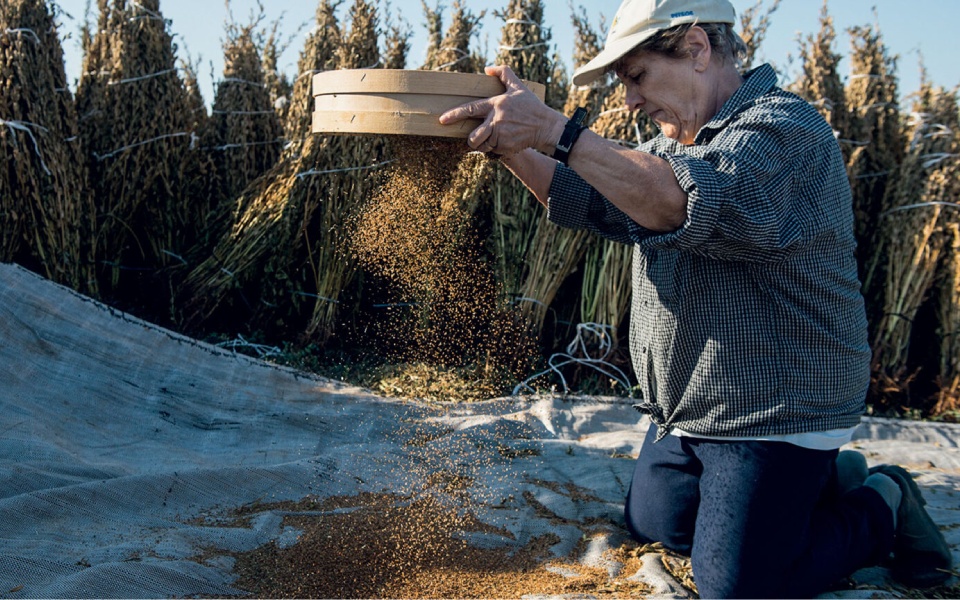It is 06:30 on a late September morning, and Anastasia, Eleni, Anna, Zisis, Dimitris and Thanassis are already in the fields. They’ve been coming here regularly in the past few months – in May for sowing, then a few visits for weeding, and a few more to check on growth rates and to uproot any prematurely ripe plants. They all live in Vrysika, near Dydimoticho, in the northeast corner of Greece, and they are continuing a long local tradition.
Thanassis Polyzoïdis, who has studied agriculture and food quality control, was the one who came up with the idea of approaching the work in a more modern way, and branding the finished product to make it more widely known. He founded the company Samythos, with help from his parents, aunts and cousins. None of them needed to learn any new skills – the family has been growing sesame for generations, using a local seed variety from the Evros region handed down from the days of Thanassi’s great-grandfather and following organic farming methods.
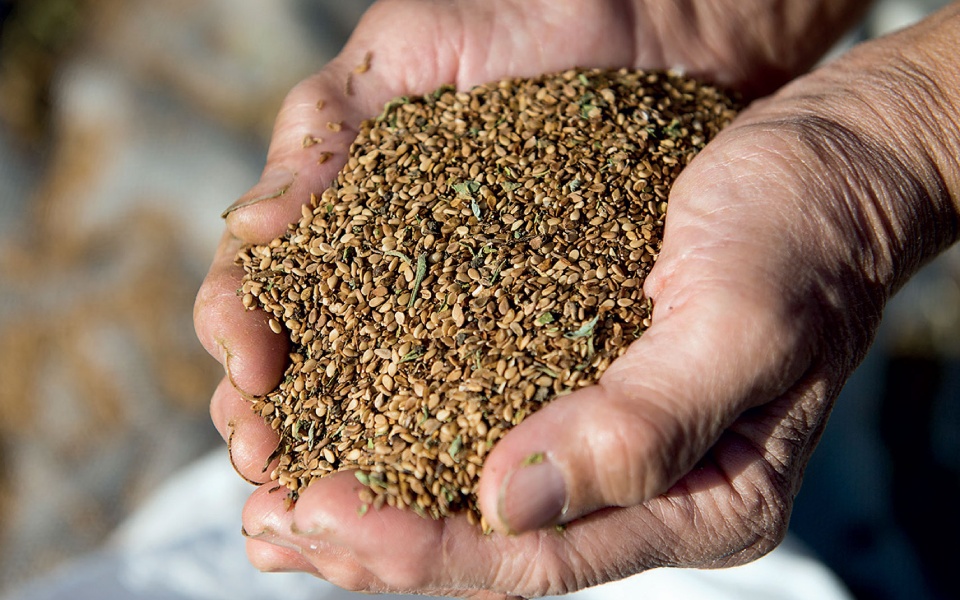
© Angelos Giotopoulos
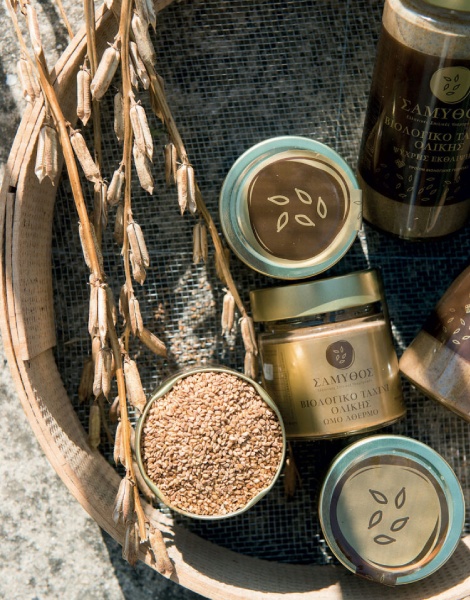
© Angelos Giotopoulos
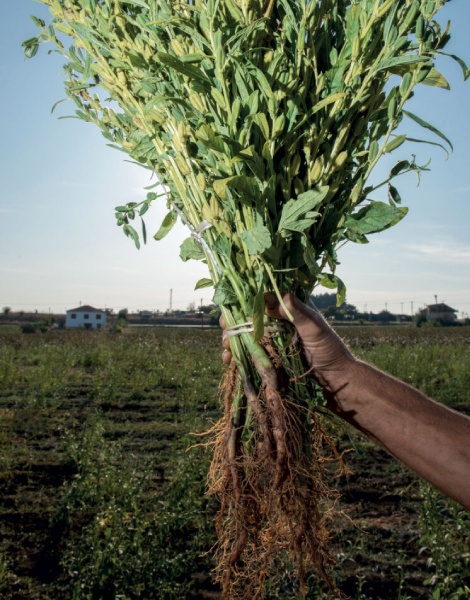
© Angelos Giotopoulos
Tradition in the fields, innovation in the lab
From harvesting and sorting to cleaning and drying, all processes are done by hand. The hilly, mountainous fields in the area are ideal for cultivating sesame, which thrive in relatively poor soils; such soil reduces the presence of plant diseases. Sesame does not require watering, which explains why it is popular in countries with dry climates, such as Sudan. The plant is harvested together with its root, which continues to feed the grain from another 10-15 days after being pulled out of the ground. The harvested plants are tied in bundles and left in the field to dry for around 20 days, after which they are beaten with wooden staffs to release hundreds of little seeds. These are then sifted. The seeds are stored at temperatures of 10-12oC and humidity rates of 45%-65%, which keeps them fresh.
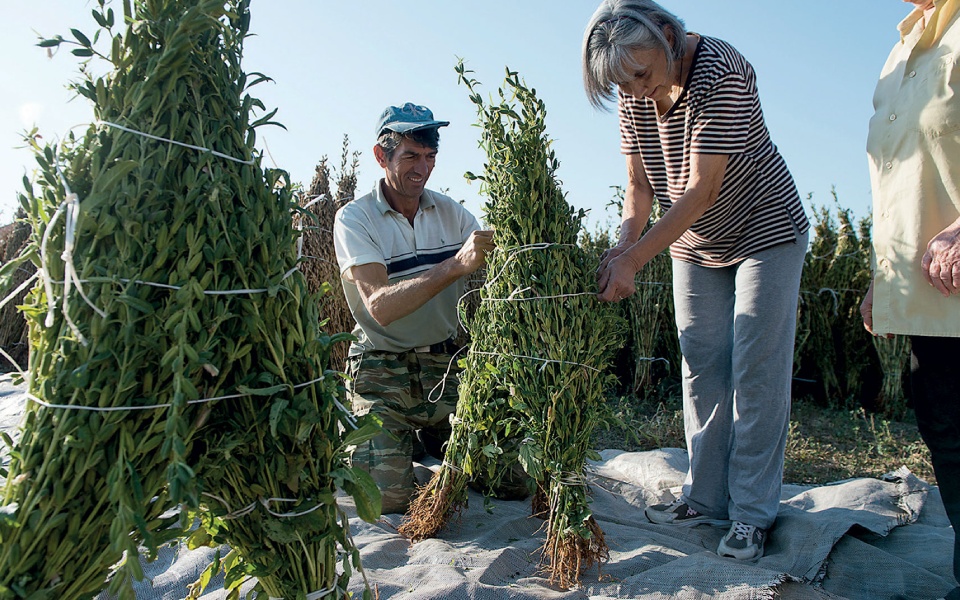
© Angelos Giotopoulos
Production can reach six to seven tons a year. Some of it is sold wholesale, while the rest is made into tahini locally, and packaged under the Samythos brand. Both the sesame seeds and the tahini are certified organic. No fertilizers, pesticides or preservatives are used at any stage of farming or production. The equipment used for processing is specially designed to be as non-invasive as possible, ensuring the seeds keep their nutrients, vitamins, flavor and aroma. Samythos produces different varieties of tahini, including a wholegrain, cold-pressed variety, for which the seeds are heated to 65oC and the paste is processed at 40-42oC, and a raw, unheated wholegrain type, which is processed at below 30oC. This safeguards the sensitive, valuable nutrients and gives the tahini a particularly rich, fresh taste and a distinctive aroma. Samythos have just added an organic wholegrain tahini, made with raw honey and herbs, and an organic wholegrain tahini with black garlic, to their product range.
Do it like a local
Local recipes use tahini in both sweet and savory recipes – for instance, the local version of trahanas soup is made by adding tahini at the end of the cooking time for a creamy finish, and the soup is sprinkled with sesame seeds instead of grated cheese.
This article was first published in Greek at gastronomos.gr.

